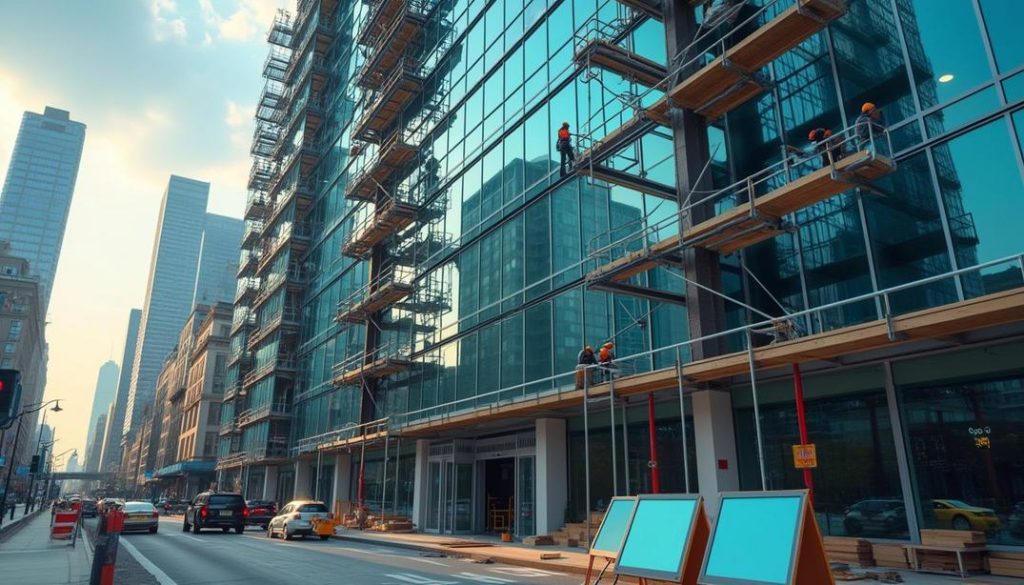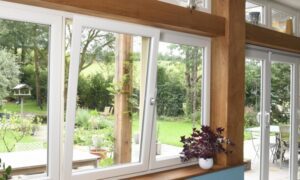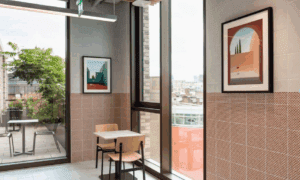In the realm of property management and business operations, maintaining a building’s infrastructure is critical to both functionality and aesthetic appeal. One vital aspect that often requires attention is the windows. Whether due to aging, damage, or the desire to upgrade for energy efficiency, commercial window replacement is a key project that can dramatically influence a business’s environment and bottom line.
This article delves into the essential facets of commercial window replacement, covering its importance, types of windows, the replacement process, benefits, and factors to consider when planning such an upgrade. Partnering with experts who specialize in Commercial Glass Services ensures that every installation meets the highest standards of quality, energy efficiency, and aesthetic appeal. If you are a business owner, property manager, or facility supervisor looking to improve your building’s performance, this guide provides valuable insights to make informed decisions.
Why Commercial Window Replacement Matters
Windows are more than just openings for light and ventilation; they contribute significantly to a building’s energy efficiency, security, aesthetic appeal, and occupant comfort. Over time, windows can deteriorate due to weather exposure, wear and tear, or damage, leading to drafts, water leaks, and increased energy costs.
A timely commercial window replacement addresses these issues, ensuring the building envelope remains tight and efficient. This replacement is particularly important for older buildings where outdated windows may lack insulation properties or fail to meet modern safety standards.
Investing in new windows can also improve the property’s curb appeal, enhance natural lighting, and create a more professional and inviting atmosphere for employees, clients, and visitors.
Types of Windows for Commercial Replacement
Understanding the types of windows available for commercial spaces is crucial for selecting the best fit for your building’s needs. Common commercial window types include:
- Fixed Windows: Non-operable, ideal for allowing light without ventilation.
- Awning Windows: Hinged at the top and open outward, providing ventilation while keeping out rain.
- Sliding Windows: Operate horizontally and are space-efficient.
- Casement Windows: Hinged on the side and swing outward, offering excellent ventilation and sealing.
- Storefront Windows: Large glass panels commonly used in retail spaces for maximum visibility.
- Curtain Wall Systems: Large-scale glass walls that offer modern aesthetics and extensive natural light.
Choosing the appropriate window depends on factors like building design, ventilation requirements, and energy efficiency goals.
The Commercial Window Replacement Process
Replacing commercial windows involves several key steps to ensure proper installation and performance:
- Assessment and Inspection: A thorough inspection of existing windows identifies damage, inefficiencies, or compliance issues.
- Measurement and Customization: Accurate measurements ensure that replacement windows fit perfectly, especially important for unique or older buildings.
- Material and Style Selection: Choosing glass types, frames (aluminum, vinyl, wood), and finishes tailored to the building’s function and design.
- Preparation: Removing old windows carefully to avoid damage to surrounding structures.
- Installation: Skilled technicians install the new windows, ensuring airtight seals and proper alignment.
- Finishing: Final touches include sealing gaps, applying weatherproofing, and cleanup.
A professional approach during each stage is essential to maximize benefits and avoid costly mistakes.
Benefits of Commercial Window Replacement
Opting for commercial window replacement brings numerous advantages that extend beyond aesthetics:
- Energy Efficiency: Modern windows use double or triple glazing, Low-E coatings, and gas fills to reduce heat transfer, lowering heating and cooling costs.
- Improved Comfort: New windows minimize drafts and temperature fluctuations, creating a more stable indoor climate.
- Enhanced Security: Updated windows often feature stronger glass and advanced locking mechanisms, deterring break-ins.
- Noise Reduction: High-performance glazing can significantly reduce external noise, creating a quieter work environment.
- UV Protection: Specialized coatings block harmful UV rays that can damage furnishings and cause occupant discomfort.
- Increased Property Value: Upgraded windows enhance the building’s market value and attractiveness to tenants or buyers.
Key Considerations When Planning Commercial Window Replacement
Successful commercial window replacement requires thoughtful planning, considering various factors:
- Building Regulations and Codes: Ensure compliance with local building codes, fire safety regulations, and energy efficiency standards.
- Budget: Evaluate the cost of materials, installation, and potential operational disruptions. Balancing quality and cost is critical.
- Window Performance Requirements: Prioritize insulation, noise control, security, or aesthetics based on building use.
- Timeline: Plan replacement to minimize impact on business operations, possibly scheduling work during off-hours or weekends.
- Warranty and Maintenance: Select windows with solid warranties and consider long-term maintenance needs.
Consulting with experienced professionals can help navigate these considerations effectively.
Environmental Impact and Sustainability
Replacing commercial windows with energy-efficient models contributes to sustainability goals by reducing energy consumption and greenhouse gas emissions. Many new window systems are designed with environmentally friendly materials and manufacturing processes, aligning with green building certifications and corporate social responsibility initiatives.
Additionally, improved insulation decreases the carbon footprint of HVAC systems, supporting overall building efficiency and environmental stewardship.
Final Thoughts
Commercial window replacement is a strategic investment that enhances building performance, occupant comfort, security, and aesthetics. Understanding the available options, the replacement process, and the associated benefits helps business owners and property managers make decisions that yield long-term value.
Whether updating aging windows or upgrading to advanced energy-efficient models, this project can transform your commercial property into a modern, efficient, and welcoming space. Planning carefully and working with knowledgeable professionals ensures a smooth replacement process and optimal results.
In the competitive world of business, maintaining a building that looks and functions well reflects positively on your brand and contributes to success. Commercial window replacement is a key part of that equation, offering tangible benefits that go far beyond simply replacing glass.



































